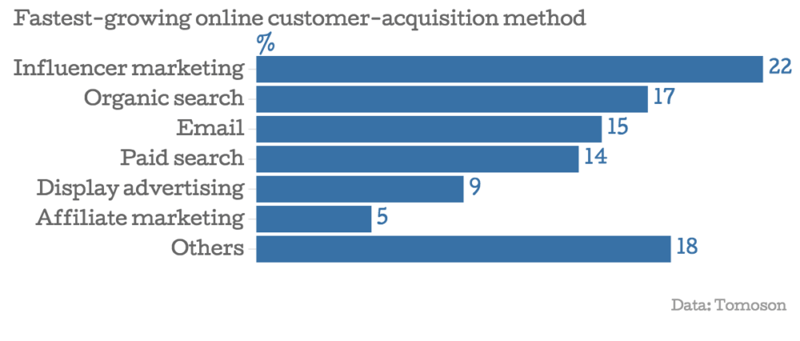Why influencer marketing should be considered part of a long-term media strategy.
"Is word of mouth all it's cracked up to be?" asked Forbes magazine in 2006. Back then, influencer marketing was in its infancy, just another buzz word synonymous with public relations. Influencers churned out content for brands who wanted to communicate with the mainstream media: press releases, sound bites, positive spin.
Today, influencer marketing holds much more clout. It's a well-oiled machine that targets individual customer segments — millennials, men or moms, for example — and drives revenue. Influencers don't just produce content for the media, they engage directly with consumers. Our influencer marketing agency knows this better than anyone. We connect brands with persuasive influencers who create great content for their established audience.
1. Influencer Marketing Has Changed
In the early days, influencer marketing was a lot like an exercise in public relations. Take car superbrand Pontiac and that famous episode of "The Oprah Winfrey Show" from 2006. Winfrey, at the time, was quite possibly the biggest influencer in the United States; she had made the Time 100, a ranking of the world's most influential figures, twice. When she gave away 276 cars to members of her studio audience, she wasn't paid for her endorsement. Pontiac approached her, she liked the idea, and the rest is television history.
.png?width=728&name=Blog%20Ads%20(2).png)
The benefits were two-fold: Winfrey created a buzz for her show, then in its 20th year; it was a watercooler moment that positively impacted ratings. For Pontiac, they exposed their then-new G6 to a lucrative niche audience: stay-at-home moms.

2. Now, Influencers are Expert Communicators
Today, influencer marketing has become more nuanced. Influencers are seen as communication channels. They provide a valuable service. They expect payment. And the end result is sales: influencers produce content that boosts revenue.
“When [influencer marketing] started out, it was all unpaid, because people viewed it as more PR-focused than media-focused,” says Rustin Banks, the co-founder and chief product officer at TapInfluence, an influencer marketing automation platform and Carusele partner. "[Now] each of these influencers is a media channel, and media channels need to be compensated.”

3. Influencers are Thought Leaders
Nowadays, the most successful marketers view influencer marketing as part of a wider media strategy and influencers as a media outlet. That's because, just like a news anchor or journalist, content creators inform, entertain, and, ultimately, persuade. Influencers regularly share their thoughts and opinions on news shows and radio programs. Influencers such as Amy Porterfield, Chris Rauschnot, and Bonnie Sainsbury — three of today's top 50 social media influencers, according to Cision — are seen as thought leaders, rather than mere specialists.
Not all influencers advertise products and services: Autoblog, for example, covers the automobile industry like a straight-forward news site. Most influencers, however, are happy to incorporate brand messages into their content. The difficult part is finding a good one. Marketers need to choose influencers who produce authentic, original stories that cleverly incorporate their brand.
At Carusele, we have been working with influencers for 9 years and have developed a select, hand-picked list of the best content creators to work with our clients’ brands.
4. More Marketers Should Connect with Influencers
Twenty-eight percent of PR managers have a relationship with an influencer in their company, compared to only 11 percent of digital marketing managers. As influencer marketing has shifted from PR to media strategy, more marketers should connect with content producers. Why? Well, influencer marketing works. It generates $9.60 for every dollar spent and offers a 37 percent higher retention rate than other types of marketing. And, in a recent survey, influencer marketing was called out as the fastest growing online customer acquisition method.

Takeaway
Influencer marketing should be part of a long-term media strategy. It’s advantages are many – but one striking benefit is that influencer marketing has the unique ability to target niche audiences that have, until now, been unreachable.
At Carusele, we work with our network of more than 7,500 content producers who create authentic stories about our clients’ brands in a wide variety of niche markets. When you work with us, we hire the right influencers for the job and we make sure that you get branded Content Everywhere™.
.png?width=504&height=360&name=Carusele%20logo%20%C2%AE%20logo%20Color%20(2).png)
.png?width=728&name=Blog%20Ads%20(4).png)
